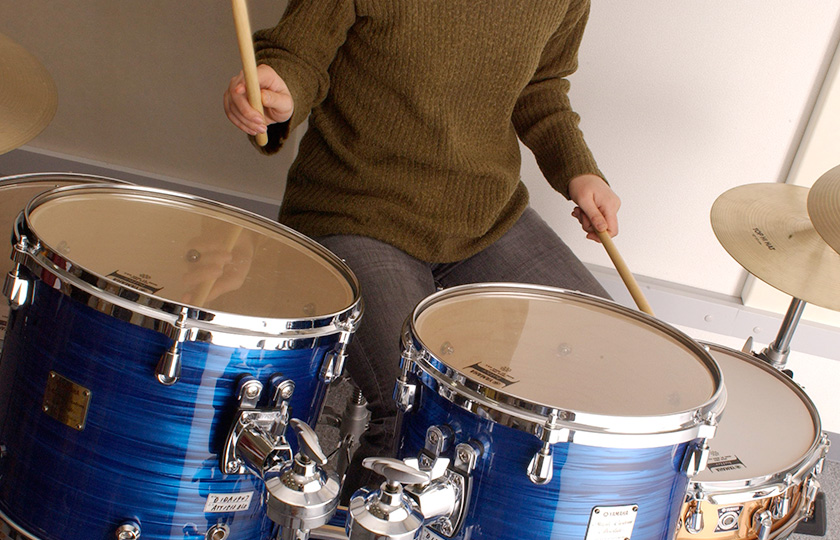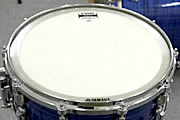How to Play the Drum
Drumming techniques
Different beats
There are a variety of rhythms possible on the drum. The 8-beat rhythm is made up of eighth notes, while a 16-beat rhythm has twice as many beats as an 8-beat rhythm. There are a variety of beats-such as the shuffle, samba, bossa nova-found in different musical genres. Let's listen to several different beats!







Rimshot varieties
The head is not the only thing beaten on a drum. On occasion the hoop that surrounds the head is also struck. These are called rimshots, and here we will introduce you to a variety of rimshot effects.
First, there is the rim-only rimshot. The Japanese taiko drum is also played in this way. Next, one of the drumsticks is laid on the rim and it is struck using the other drumstick. One can hear the crack of the wood being struck. Then there is the open rimshot, in which the rim and head are struck at the same time. In jazz, this type of rimshot is shallow, with the contact being made near the edge of the drum. Then there is the closed rimshot that is used in bossa nova and other styles of music. The stick is pinched between the thumb and index finger, and the rim is struck with the shaft of the stick.
Playing the rhythm only
Open rimshot
Striking the stick
Closed rimshot
About muting
Muting is done to suppress the volume, sustain, or overtones of an instrument. This can make it easier to perform or record a piece, or it may change the tonal qualities of the instrument.
For drums, muting is achieved by taping some rolled up tape or tissue to the head, or putting a donut-shaped mute ring on the head. There is also something called the tuning mute, in which the heads are intentionally loosened so that they do not ring. Cymbals can be muted with tape or a handkerchief, and the bass drum can be muted with a blanket, dumbbells, or pillow. There seems to be as many methods as there are drummers.

A ring mute suppresses vibrations at the edges, thus muting the high tones.
